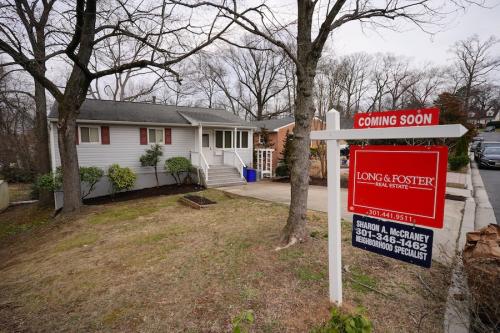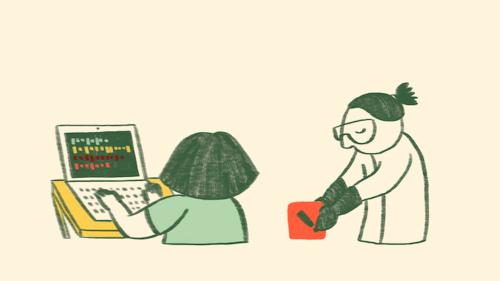Key takeaways:
- Nationally, unemployment remained stable between June 2024 and June 2025, although unemployment for Black workers increased by over half a percent.
- In the Washington, D.C. metro area, this trend is reversed: Total unemployment has risen by almost 0.6 percentage points, with the white unemployment rate increasing more than the Black unemployment rate.
- Other long-standing regional trends are also becoming inverted: The District of Columbia’s unemployment rate rose less than most of the region’s wealthier suburbs, where more federal workers live. The District was also the only county-equivalent in the region to see a decline in unemployment among workers of color.
- In total, the DMV region added more than 20,000 new unemployed workers and saw an additional 20,000 workers drop out of the labor force altogether over the past year, suggesting that workers who have recently lost their jobs have found few avenues back into the workforce.
- Regional private sector leaders and elected officials across sectors and geographies must combine efforts to reverse the metro area’s labor market stagnation, diversify and grow its economy, and reduce disparities to prevent long-run damage.
The Washington, D.C. metropolitan area—spanning the District of Columbia, Maryland, and Virginia (the “DMV region”)—is the nation’s sixth-largest regional economy, and home to three of the five wealthiest counties in the United States. Yet this prosperity exists alongside extreme inequality: The DMV has long been a region divided, with a large and growing gap between the median earnings of the white population compared to people of color, and the median household incomes of the wealthiest neighborhoods compared to the poorest. In hard times, such as the foreclosure crisis, the brunt of the pain is borne by the District and region’s eastern and southern suburbs, where incomes are relatively lower and Black population shares are highest.
About the DMV Monitor
The DMV Monitor is an ongoing project to track the economic and social trends in the Greater Washington, D.C., Maryland, and Virginia metropolitan area, in order to help leaders and the public understand the effects of federal restructuring and other policies on the region and its households in 2025 and beyond.
For more information, see the interactive dashboard or read more about the DMV Monitor’s findings.
This disparity is typical nationwide. Black unemployment has spiked during recent recessions, despite already persistently outpacing white unemployment as a result of historical discrimination and disparities in pay and bargaining power. Joblessness rates are not only steeper for workers of color, but also longer-lasting, as Black and Latino or Hispanic workers are often the first to be fired when the economy shows signs of weakness, and the last to be hired during recoveries. In the DMV region, historically, unemployment has been disproportionately concentrated in the District of Columbia—the only core-county-equivalent in the metro area with a higher unemployment rate than the nation overall.
While the U.S. economy has not yet officially entered a recession, evidence from recent months of employment data demonstrates that nationwide labor market stagnation is once again falling disproportionately on workers of color. While overall unemployment remained stable between June 2024 and 2025 (increasing by less than a tenth of a percentage point), unemployment for Black workers increased by over half a percent (0.58 points).
However, in the DMV region, we see a different trend. Total unemployment is up by almost 0.6 percentage points, and the white unemployment rate has increased more than the Black unemployment rate.
As unemployment in the DMV region has risen, long-standing spatial distributions of joblessness have begun to shift. Between 2024 and 2025, the District of Columbia saw its unemployment rate rise less than most of the region’s suburbs (particularly those in Virginia), and was the only county-equivalent in the region to experience a decline in unemployment among workers of color. Though the unemployment gap between white workers and workers of color remains higher in the District than in the suburbs, this may change if disparities continue to worsen in Northern Virginia and Southern Maryland.1
Importantly, the unemployment rate is not a sufficient measure in identifying whether structural joblessness is rising. For instance, during periods of economic recovery and expansion, a surge in individuals reentering the labor market may lead to temporarily heightened unemployment as they search for work. Evidence indicates that these are not the dynamics at play in the DMV region. Since June 2024, the region added more than 20,000 new unemployed workers (an increase of more than 19% year over year), and saw an additional 20,000 workers drop out of the labor force altogether. In sum, more than 46,000 workers who were employed in June 2024 no longer held a job one year later. These patterns of job market stagnation suggest that in aggregate, workers who have lost their jobs in recent months have found few avenues back into the workforce.
This analysis is based on data available through June 2025 and does not include the impact of deferred resignations, also known as “the fork.” These are federal workers who accepted an offer to leave their jobs but remained on the federal payroll until the end of the fiscal year (September 30, 2025). These early trends may reverse as additional quarters of data become available.
Our findings underscore the interconnectedness of the DMV region’s single regional economy, which unites even this historically segregated region. For example, the District of Columbia has shed more than 6,000 federal jobs since last year, which is a challenge for the city. At the same time, unemployment in Arlington, Alexandria, and Fairfax County, Va., has risen more than in the rest of the region, because nearly 117,000 workers live in these areas but commute into the District for work (including more than 27,000 federal employees).
The unemployment rate is far more than a barometer of economic health—it’s a bellwether for long-term socioeconomic conditions. Evidence has repeatedly demonstrated that individuals facing long-term unemployment experience lower earnings, particularly in the immediate aftermath of economic downturns. Workers who are left unemployed for as little as one year carry substantially higher lifelong mental and physical health risks that compound over time. Neighborhoods and regions with heightened long-term unemployment also experience markedly higher rates of violent crime.
Rising unemployment, therefore, should be alarming to policymakers and elected officials, both in the DMV region and across the nation. Nationally, these patterns foretell worsening racial disparities in economic outcomes—disparities that become increasingly difficult to mitigate the wider they become.
Regional private sector leaders and elected officials are strategizing to connect newly unemployed workers with new opportunities. Leaders across sectors and geographic levels must also combine efforts now to reverse labor market stagnation, diversify and grow the economy, and reduce disparities to prevent long-run damage to the region and the nation’s economic and social welfare—for both white workers and workers of color alike.
-
Footnotes
- Includes Black, Asian American, Native Hawaiian, and Pacific Islanders; American Indian and Alaska Natives; and workers self-identifying as two or more races. Both white workers and workers of color may include workers of Latino or Hispanic origin.
The Brookings Institution is committed to quality, independence, and impact.
We are supported by a diverse array of funders. In line with our values and policies, each Brookings publication represents the sole views of its author(s).







